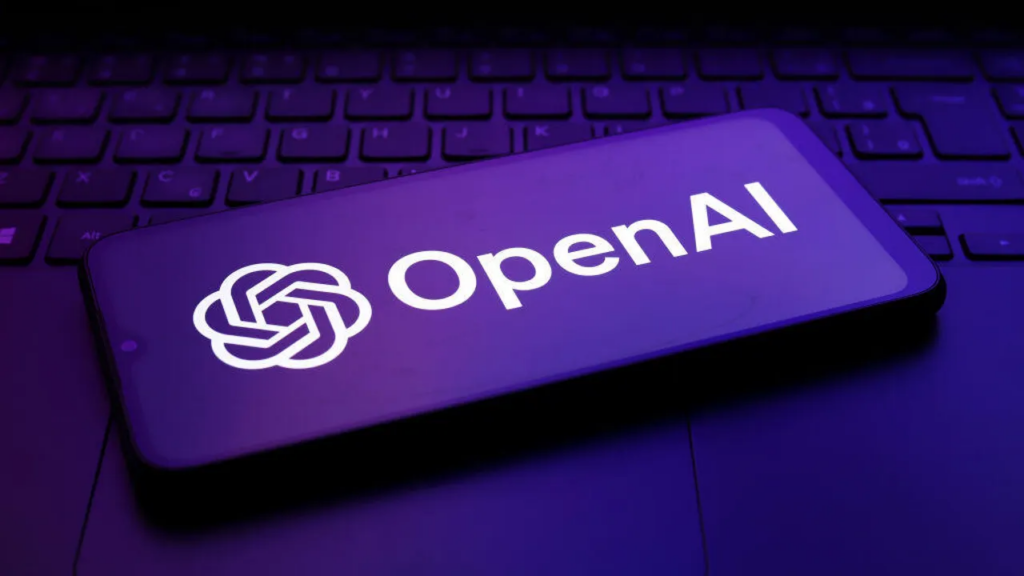The release of GPT-4 marked a significant leap in natural language processing (NLP), and the introduction of GPT-4.1 has brought further refinements. These new features offer improvements in accuracy, multimodal capabilities, and user experience. But how exactly does GPT-4.1 differ from its predecessor? In this article, we’ll explore the key upgrades in GPT-4.1 over GPT-4 and how these changes can benefit both users and developers.
Key Upgrades Over GPT-4 Explained
1. Enhanced Fine-Tuning Capabilities in GPT-4.1
One of the most notable improvements in GPT-4.1 is its ability to fine-tune models with greater precision. While GPT-4 already offered advanced customization options for developers, GPT-4.1 makes it easier to fine-tune the model for specialized tasks with fewer training examples. This enhanced flexibility is especially important for industries looking to use AI in specific domains. For more information on fine-tuning, check out OpenAI’s fine-tuning guide.
This upgrade benefits businesses and individual users by providing more accurate and contextually relevant responses, making GPT-4.1 a highly adaptable tool.

2. Improved Multimodal Capabilities
GPT-4 already incorporated multimodal capabilities, enabling it to understand both text and image inputs. However, GPT-4.1 pushes this even further by enhancing its ability to process and integrate more complex multimodal data. This means GPT-4.1 can analyze and respond to a broader variety of inputs, including images, videos, and possibly even audio.
This improvement is particularly beneficial for industries like healthcare and education, where analyzing visual data (such as medical scans or diagrams) is crucial. For more on how multimodal AI is changing industries, check out this article on multimodal AI advancements.
3. Improved Reasoning and Problem-Solving
While GPT-4 already demonstrated strong reasoning abilities, GPT-4.1 enhances its problem-solving skills, especially in multi-step reasoning tasks. Whether you’re tackling complex mathematical problems or navigating intricate logical questions, GPT-4.1 can now provide clearer and more accurate solutions. This is a significant upgrade for users working in technical fields or academia.
Additionally, the model’s ability to follow complex chains of reasoning is improved, making it a more reliable tool for tasks that require deep thought and analysis. To see some examples of how AI models handle complex reasoning, you can visit this research paper on AI problem-solving.
4. Reduced Hallucinations and Improved Accuracy
A major challenge with previous GPT models was the occurrence of “hallucinations,” where the AI generated incorrect or fabricated information. With GPT-4.1, this issue is significantly mitigated. The model’s enhanced filtering algorithms ensure that the responses it generates are more accurate and reliable. This is particularly important for applications in research, content generation, and decision-making.
OpenAI has invested in refining its AI models to minimize the risk of hallucinations, making GPT-4.1 a more trustworthy tool. To learn more about AI hallucinations and how they’re addressed, check out this article on AI hallucinations.
5. Greater Contextual Understanding
GPT-4.1 builds on the improvements made in GPT-4 to offer a deeper understanding of context. The model can now handle longer input sequences and maintain context more effectively over extended conversations. This improvement is particularly valuable for applications in customer service, technical support, and content creation, where long-form responses are common.
For businesses looking to integrate conversational AI into their customer service platforms, this feature significantly enhances the overall user experience. Learn more about how AI is transforming customer service in this Forbes article on AI in customer service.
6. Faster Response Times
While GPT-4 was already impressive in terms of speed, GPT-4.1 introduces further optimizations to reduce response latency. This is especially beneficial in real-time applications such as virtual assistants or customer service chatbots, where quick responses are essential. The reduced latency improves the overall performance of applications built on GPT-4.1, making it a more efficient tool for developers and end users.
If you’re interested in learning how GPT models are optimized for faster performance, check out this detailed guide on AI model optimization.
7. Expanded Language Support
Building on GPT-4’s multilingual capabilities, GPT-4.1 extends its support for even more languages. The model’s understanding of underrepresented languages, dialects, and complex linguistic nuances has been improved, making it more versatile for global users. Whether you’re working in translation services or cross-cultural communication, GPT-4.1 offers enhanced accuracy in a wider range of languages.
8. Ethical and Safety Improvements
Ensuring that AI operates safely and ethically remains a top priority for OpenAI. GPT-4.1 introduces additional safeguards to reduce the risk of generating harmful, biased, or inappropriate content. By improving content moderation features, OpenAI aims to make GPT-4.1 a more responsible AI tool that aligns with ethical standards.
Updated Pricing Models
Along with the new capabilities of GPT-4.1, OpenAI has introduced a fresh set of pricing options to accommodate a range of users—from small businesses and individual developers to large enterprises.
Subscription Tiers:
- Free Tier: For individual users or developers just getting started with AI, OpenAI will continue offering limited access to GPT-4.1 at no cost. This tier will allow users to experiment with basic functionality, though there will be usage caps and limited features compared to the premium models.
- Pro Tier: This paid tier will unlock the full capabilities of GPT-4.1, offering faster response times, higher API limits, and access to advanced features. The Pro Tier is aimed at professional users, developers, and businesses looking to integrate AI into their workflow or customer service.
- Enterprise Solutions: For large companies or organizations requiring custom solutions, OpenAI is offering bespoke pricing for enterprise-level deployments of GPT-4.1. This tier provides tailored support, robust API access, and integration assistance, ensuring a seamless AI experience for high-demand environments.
Pricing Breakdown:
- Free Tier: $0/month (with limited usage)
- Pro Tier: $20/month (includes advanced features and higher usage limits)
- Enterprise Solutions: Custom pricing based on use case, volume, and support requirements
OpenAI has designed these pricing structures to make its AI tools accessible to a wide variety of users, from hobbyists and developers to large corporations, ensuring that the potential of GPT-4.1 can be harnessed by anyone interested in leveraging its power.
Conclusion: A More Powerful and Reliable AI
GPT-4.1 builds upon the success of GPT-4 by offering improvements in fine-tuning, multimodal capabilities, reasoning, response accuracy, and safety features. These upgrades make GPT-4.1 a more powerful, versatile, and reliable tool for a wide range of applications, from customer support to content creation. As AI continues to evolve, GPT-4.1 brings us closer to achieving truly intelligent and human-like interactions between machines and users.



